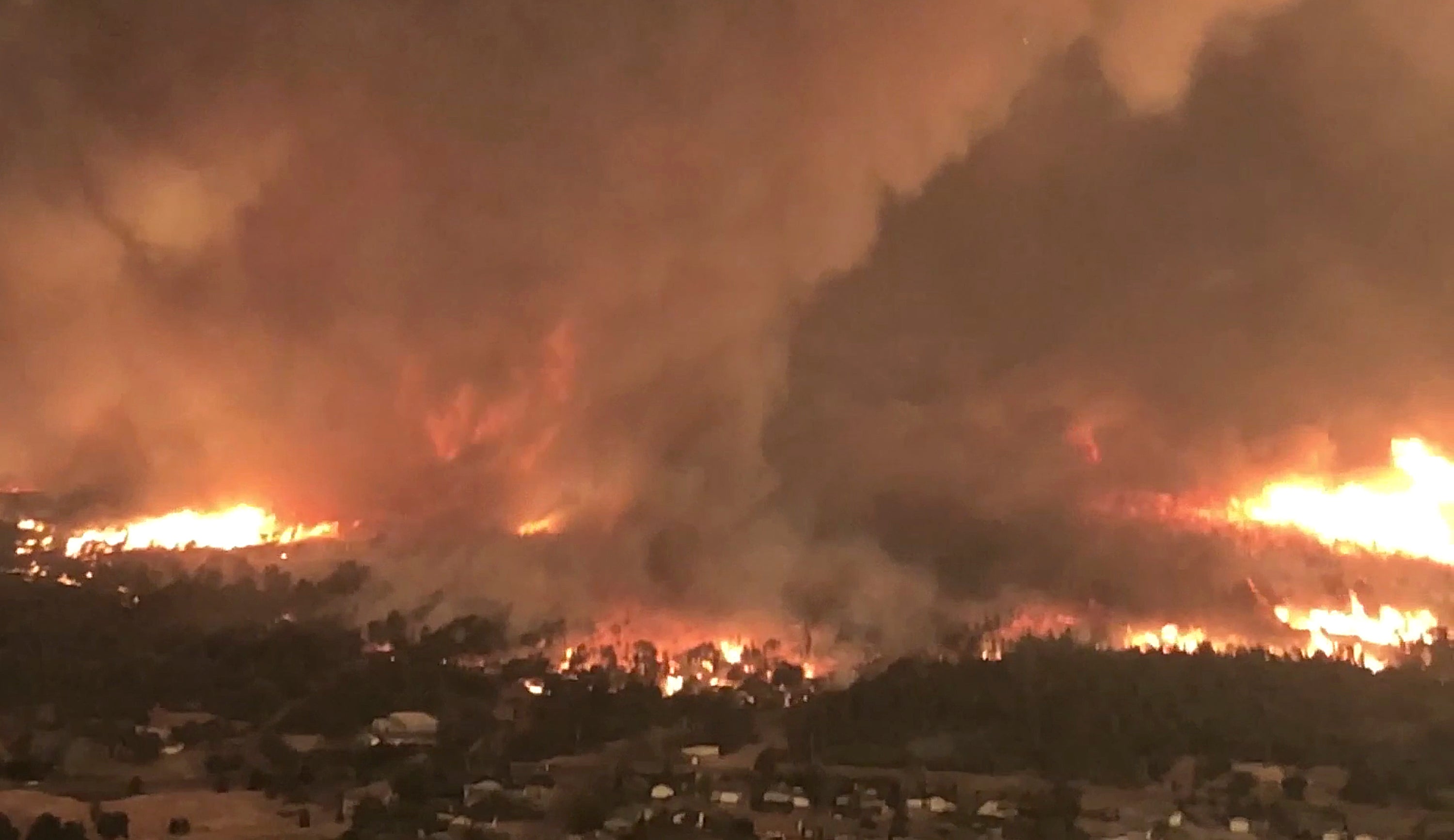Fire tornadoes: Firefighters in California face a rare and dangerous phenomenon
High winds and severely dry conditions have created a ‘particularly dangerous situation’

Your support helps us to tell the story
From reproductive rights to climate change to Big Tech, The Independent is on the ground when the story is developing. Whether it's investigating the financials of Elon Musk's pro-Trump PAC or producing our latest documentary, 'The A Word', which shines a light on the American women fighting for reproductive rights, we know how important it is to parse out the facts from the messaging.
At such a critical moment in US history, we need reporters on the ground. Your donation allows us to keep sending journalists to speak to both sides of the story.
The Independent is trusted by Americans across the entire political spectrum. And unlike many other quality news outlets, we choose not to lock Americans out of our reporting and analysis with paywalls. We believe quality journalism should be available to everyone, paid for by those who can afford it.
Your support makes all the difference.Firefighters in California are facing a rare and dangerous phenomenon as wildfires create swirling fire tornadoes.
The combination of high winds and severely dry conditions have created a “particularly dangerous situation” in which any new fire could explode in size.
Meteorologist Todd Hall said fire tornadoes could be created in such extreme conditions.
Fire whirl, fire devil, fire tornado or even firenado — scientists, firefighters and regular folks use multiple terms to describe similar phenomena, and they don’t always agree on what’s what. Some say fire whirls are formed only by heat, while fire tornados involve clouds generated by the fire itself.

The National Wildfire Coordinating Group’s glossary of wildland fire terms doesn’t include an entry for fire tornado, but it defines a fire whirl as a “spinning vortex column of ascending hot air and gases rising from a fire and carrying aloft smoke, debris and flame,” and says large whirls “have the intensity of a small tornado.”
Wildfires with turbulent plumes can produce clouds that in turn can produce lightning or a vortex of ash, smoke and flames, said Leila Carvalho, professor of meteorology and climatology at the University of California, Santa Barbara.
“There is a rotation caused by very strong wind shear and a very hot, localized low-pressure system,” she said.
Fire tornados can make fires stronger by sucking up air, Carvalho said. “It creates a tornado track, and wherever this goes, the destruction is like any other tornado.”
In 2018, a fire tornado the size of three football fields killed a firefighter as it exploded in what already was a vast and devastating wildfire near near Redding, about 250 miles north of San Francisco in northern California. Scientists later described an ice-capped cloud that reached 7 miles into the air and caused winds up to 143 mph (230 kph).
Research also suggests fire tornadoes can carry airborne embers, also called firebrands, over long distances, said James Urban, an assistant professor in the Department of Fire Protection Engineering at Worcester Polytechnic Institute. They also can change the fire’s behavior, he said.
“That’s also something that is dangerous and scary for first responders, or really anyone,” he said. “It can change and maybe go in a different direction.”
The interaction between wind, the fire plume and topography determines whether a tornado will develop, he said. For example, sometimes a certain topography will restrict airflow in such a way that a spiral pattern develops.
Together with San José State University, Worcester Polytech is part of a Wildfire Interdisciplinary Research Center. In the lab in Worcester, researchers have created small fire tornadoes by putting up walls around a fire or arranging a bunch of little fires that together restrict airflow. But that’s on a much smaller scale than what’s happening with the wildfires.
“We’ve got the biggest fire lab in the U.S. for a university, but we cannot get something the size of what’s been reported at these fires,” he said. “You can’t really bottle that and put it in a lab.”